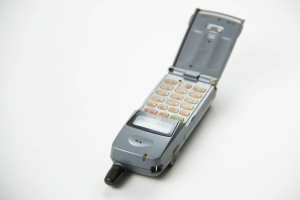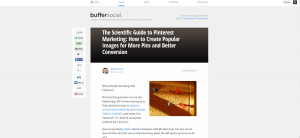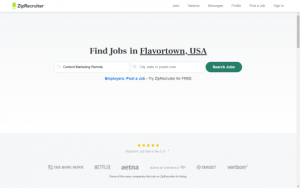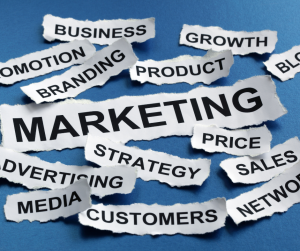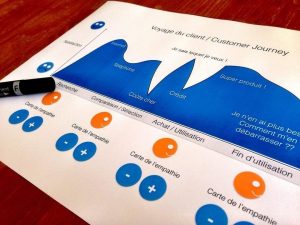Do you have a product to sell to retail? If you are a consumer products company, an inventor, or an entrepreneur, one of your end goals is to successfully sell your products into and through retail stores—either brick and mortar or online. Whether your goal is to sell your product regionally, nationally, or globally, you must convince a buyer to stock your product.
Many companies believe that a new product is so great that every retail buyer will want their product. They may or may not be right. I have talked with a number of product developers who have a “If we build it, retailers will buy it” attitude. If your company name is Procter & Gamble, Nike, Apple, or Samsung, you are probably right. If your brand or company is not number one in your market segment, you may have more challenges and competition to earn your spot on the retail shelf. Mintel’s Global New Product Database currently adds over 20,000 new products a month, worldwide. Are you ready to compete with these products for retail distribution?
I have participated in many new product pitches and have seen the sales presentations for many others. Not all products excite a retail buyer equally. But even a great product may not reach the shelf if the sell in presentation does not provide the needed information to meet the buyer’s needs. The following checklist should help you prepare for your next new product presentation.
Sixteen Key Actions to Sell Your Product
_____ Know your market—Shoppers, consumers, and competitors. Know who buys products in your category and why. Who are you targeting for your new product? Who is the end consumer? Who are your future key competitors? Is it your own products or competitive brands? If you have a product ready to launch, all of these should be well known to you by now. Visit and audit stores to learn the market and retailers.
_____ Know your value proposition—Know what is unique and valuable about your product—to retailers, to their shoppers, and to their end consumers. Why does your product truly belong on their retail shelves? What should it replace? What data or insights can you bring to back up that pitch? You will need your reason for being (value proposition) and several supporting data points to justify it (reasons to believe).
_____ Know your target retailers—First of all, learn whom you need to sell to. Without their name, it will be difficult to get an appointment. If it is a new buyer to you, can you get a referral from someone you know? You will need to know the retailer well. What is important to them in the buying decision? Learn everything you can before setting up an appointment. Make visits to multiple stores before you pitch a retailer. How do they differentiate themselves in the market? How do they merchandise your category? What products do they sell at what price? How do they promote? Be prepared to talk about how your product will fit in their store.
_____ Show proof—Get quick wins early. Success can accelerate if you can point to others already buying your product. Create an early success story with one to two retailers. Bring your story and your numbers to prove your results to others. Today, data sells new products more than relationships. Bring research and test market data to help your sales pitch resonate.
_____ Where to sell—Don’t sell your largest target customer first, but do not be afraid to sell to large customers early once you have a solid sales story to tell.
_____ Bring a brand to sell, not just a product—Buyers and shoppers connect with brands, not just products. Be prepared to talk about your brand and your plans to build your brand in the future.
_____ Intellectual property—Do not present your product before you have protected your intellectual property. Have you filed at least a provisional patent? Have you trademarked your brand? Do not discuss your product or brand before you are protected.
_____ Sell sheet—Your sell sheet is a front and back selling tool that lists everything the buyer needs to know to buy your product from you. It should include:
- Brand logo—establish the brand for this product.
- Product photo—a great photo of what your product looks like inside and outside of the package.
- Product specifications—all product dimensions, packaging dimensions, product, package and pallet weight, shipping configuration, boxes per case, cases per pallet.
- Product availability date—when your product will be available to ship.
- UPC code and case codes—for the retailer to enter into their system.
- Merchandising information and suggestions—use a separate sheet if you are offering prepacked shippers.
- Information on how to place the order—Are orders placed on your website, through EDI, etc.?
- Company and contact information—to reach you after the meeting.
- Marketing calendar—show your launch support—this can be on a different sheet if room is needed for the above.
_____ Product samples in finished retail packaging—Bring, and be prepared to leave, product samples that are production samples ready to sell. Buyers may express interest in a prototype, but they place orders for finished product that is ready to ship. This means final packaging and product. Your commercial production line may not yet be commissioned, but you cannot show one product and ship a retailer something different once they order it.
_____ End-user Endorsements—Test your product with target consumers. Show the test results and quotes from consumers about what they like about your product.
_____ Cost information—Be prepared with the wholesale cost to the retailer, distributor costs if there is a distributor needed, and the manufacturer’s suggested retail pricing (MSRP).
_____ Website and social media—Have your website ready to share in a sell-in meeting. Social media can be launched when new products are on the shelf, but be prepared to share your digital marketing plan.
_____ Other marketing support—Reach out to media to see if you can get some early PR support. If your marketing budget is small, PR may be your best friend. An in-store pre-packed shipper can also provide a second point of distribution or a way to gain initial trial and sales before getting a permanent spot on shelf. If you will be supporting the launch with advertising or promotion, bring a marketing calendar to show how you will be supporting the product in market.
_____ Make sure you are ready for success—Know how much volume you can produce and finance in the first year. Many new companies fail from not being able to fulfill early large orders. Others fail from not having the finances lined up to cover costs while waiting to get paid for early orders.
_____ Attend the key trade shows—If you cannot get in to see all of the key buyers or cannot afford to travel to many retailers, go where the key buyers go. Do not waste money on trade shows that are not important to your key buyers. Do your research. Know which trade shows are important to your category buyers and for new product launches. Buy a booth and prepare an engaging display to capture the attention of potential buyers. Be ready to sell.
_____ Listen to feedback—Some buyers may give you good coaching and the opportunity to come back with a revised product if they find your initial product falls short of their needs. This feedback may open opportunities for a revised product and provide ideas for product improvements to create version 2.0.
In short, do your homework and be prepared before you make the first sales appointment. You often get only one chance to sell a new product into a retailer. Hopefully this list will help you get ready to sell your product to retail.
(215)
